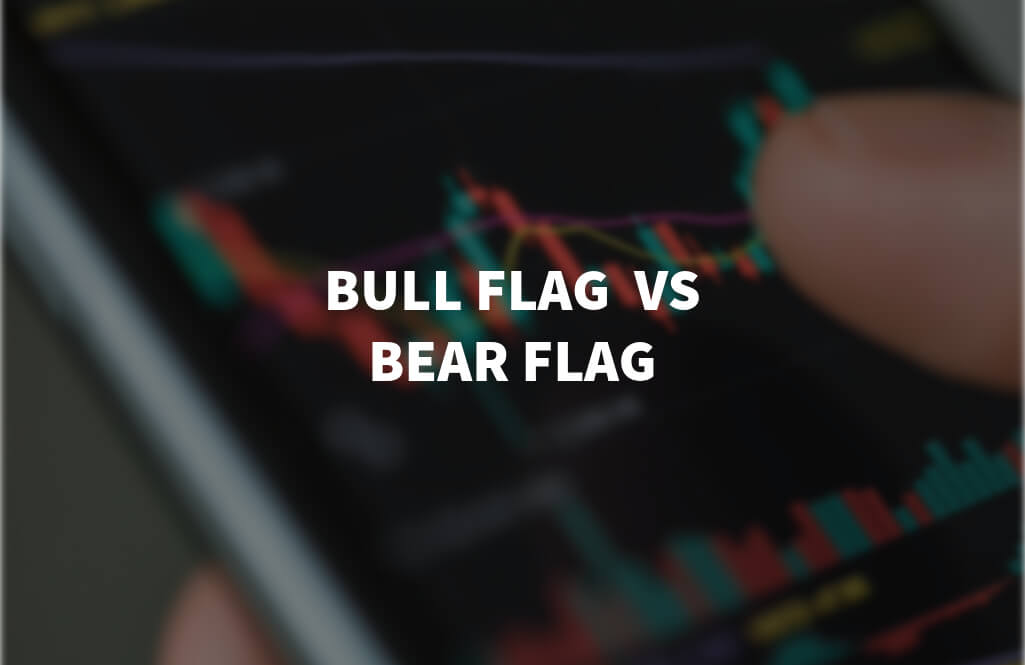Bull Flag Pattern vs Bear Flag Pattern
If you are a beginner in trading, you have probably heard of many technical terms, such as “bull flag pattern vs bear flag chart pattern. It may seem confusing at first. Don’t worry, in this article we will demystify these concepts and show you how it can be used to identify lucrative trading opportunities.
What is the flag pattern?
The flag is a technical analysis pattern often used by price action traders. There are bullish and bearish flags. A flag consists of a small channel formed with an oscillation between resist and supports.
This channel is the opposite of the trend, that is to say that for a bullish flag, the channel will be slightly bearish. When support or resistance is broken, price breaks out of the channel and usually sees a strong market move in the direction of the trend.
Bull Flag Pattern vs Bear Flag Pattern Explained
Flags are a trading pattern that appear briefly after a marked market movement. They are characterized by a small parallel channel that goes against the dominant trend. Following this consolidation period, a breakout occurs and the price returns vigorously towards the initial trend. There are two types of flags: bullish and bearish.
In the case of a bull flag, the consolidation is downward within an overall rising market. The break of this channel upwards announces the resumption of the ascending trend.
On the other hand, a bear flag candle represents, before the breakout signals the continuation of the decline, downward trend but with ascending consolidation.
You can avoid getting false signals if you add additional confluence factors.
In order to trade bull flags effectively, it is important to predict the trend’s continuation following a period of consolidation. Place yourself strategically near the lower end of a channel (for a bull flag) to prepare for the upcoming breakout and capitalize on the robust trend reversal.
What is a Bull Flag?
Bull flag helps traders to find an entry point for a usually long trading position. This flag is also known as the bullish pennant. You can spot it on the chart signaling the continuation of the upward trend. It has two main components which are the flagpole and the flag.
The flagpole represents the initial bull flag stage. You can spot it as a steep and sudden rise in asset price. It is usually driven by strong buying pressure. Traders pay close attention to this rapid increase as it could suggest a notable change in market sentiment in favor of buyers.
Following the flagpole stage, the market enters a period of price consolidation, creating a pennant formation. The pennant is characterized by a tighter, more horizontal price pattern, with the highs and lows of the candles converging. This consolidation serves as a temporary break for traders following a rapid increase in prices during the mast phase.
Identifying a Bull Flag
There are several ways to identify a bull flag. Let’s see the most convenient ones. First you need to spot a clear uptrend with increasingly higher highs and lows. Then you need to identify the flagpole by looking for a sharp rise in price with a significant increase in trading volume. Also, traders should look for the pennant by observing price consolidation with narrower price movements and decreasing trading volume.
How to trade Bull Flag?
Once you have identified a Bull Flag, you may be wondering how to act as a beginner trader. Here are some practical tips:
Wait for confirmation: Before acting, wait for the price to break the pennant resistance line to the upside. This confirms the Bull Flag and indicates a possible continuation of the uptrend.
Choose a good entry point: Place a buy order slightly above the pennant resistance line to take advantage of a possible price increase.
Set profit targets and stop losses: Determine your desired profit levels based on past price movements. Likewise, use stop-losses to limit your losses if the trade goes against your predictions.
In terms of managing risk, a price move below the support of the flag formation may be used as the stop-loss or failure level.
The Bull Flag is an essential pattern that trading beginners should understand. By recognizing this correctly, you will be able to seize potentially lucrative trading opportunities during uptrends.
Remember to always implement appropriate risk management when trading. With practice and experience, you will be able to take full advantage of the potential of the Bull Flag to improve your performance as a trader.
What is Bear Flag Pattern?
You should not confuse the bearish flag with the bearish pennant. The bearish flag can be classified in the same family as “ranges”, but does not lead to the same conclusions in terms of price forecasts. Learning to spot such a pattern is not very complicated, especially since many stock market software offers automatic pattern recognition. The hardest part is trading it and profiting from it.
Identifying Bearish Flag
The term “bearish” refers to two elements: the past trend and future prediction. So a bear flag forms in a downtrend. The price seems to want to start rising again and it begins to evolve in a flag pattern, oscillating between two parallel lines of positive slope, which act as support and resistance.
In trading bearish flags the time frame has no importance: a bearish flag can be spotted on any temporality, like all chartist figures because they are fractals.
What bear flag predicts?
The bear flag is a continuation pattern and not a reversal. The formation of this pattern will therefore not cause a change in trend. The formation of a bearish flag corresponds to a phase of market consolidation following a bearish acceleration. Once this consolidation has taken place, the market will start to decline again.
The only unknown in the interpretation of this figure is the duration of the consolidation phase: this may be more or less long and it is very difficult to predict the moment of exit.
The greater the slope of the flag, the faster the output will be, relative to the UT in which the figure is analyzed.
When the price leaves its flag and the exit is validated, the downward potential is easy to evaluate: according to the great principle of symmetry that we often find in chartist analysis, the downward movement which will follow will be an amplitude equal to that which preceded the formation of the flag.
The objective, the target, can therefore be deduced very simply.
How to trade bear flags?
There are several ways to position yourself on the market when a bear flag is in formation.
One trading strategy consists of taking a short sale position as soon as the price crosses the support line to benefit from the bearish acceleration. But the best is to wait for confirmation of the decline and position yourself on the pull back which occurs nine times out of ten
Another riskier technique is to treat the flag as a range. In the case of a bearish flag, the underlying trend being bearish, we will be able to sell the asset each time the price comes to support resistance and we will buy back when the price hits support.
By proceeding in this way, we reduce the risk incurred because the exit of the flag will normally be in the trend, therefore in the direction of the VAD. In both cases, trend is your friend: in other words we play the decline on a bearish flag.
The importance of high volume breakout
The high volume helps avoid false breakouts.Those who trade bull and bear flag patterns may anticipate a breakout with a significant increase in trading volume.
A surge in volume during a breakout indicates a powerful force driving the price out of a period of consolidation and into a new trend. A high-volume breakout suggests that the direction of the breakout is more likely to continue in the same direction.
The post Bull Flag Pattern vs Bear Flag Pattern appeared first on FinanceBrokerage.
































